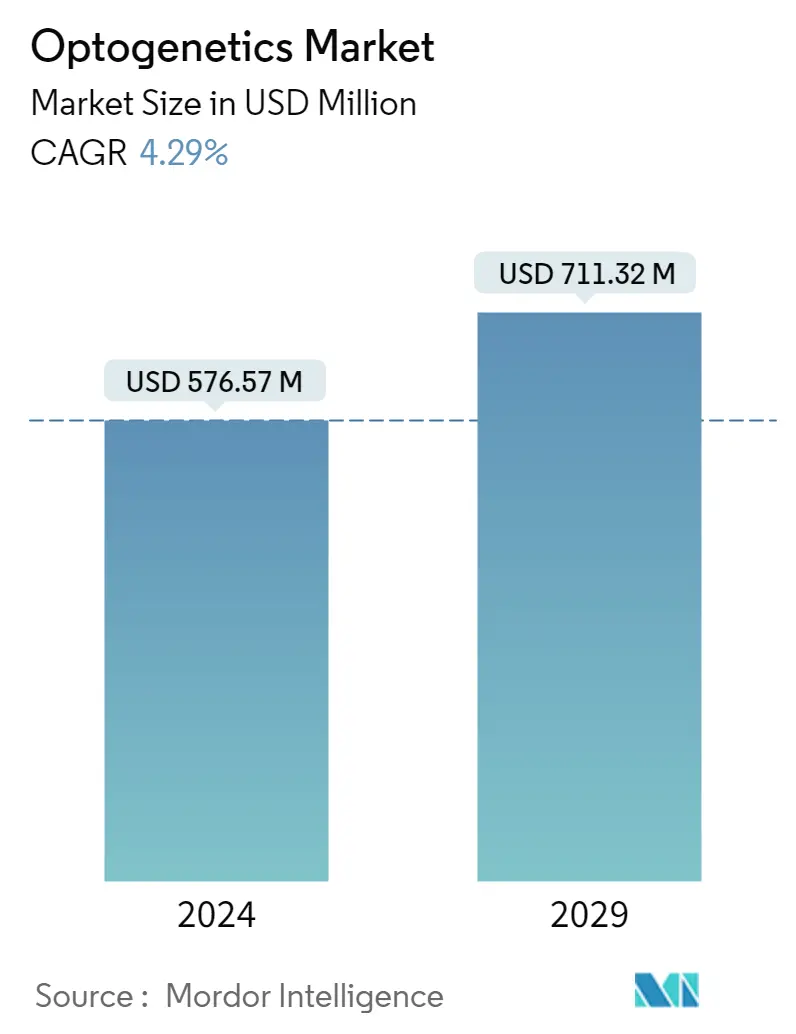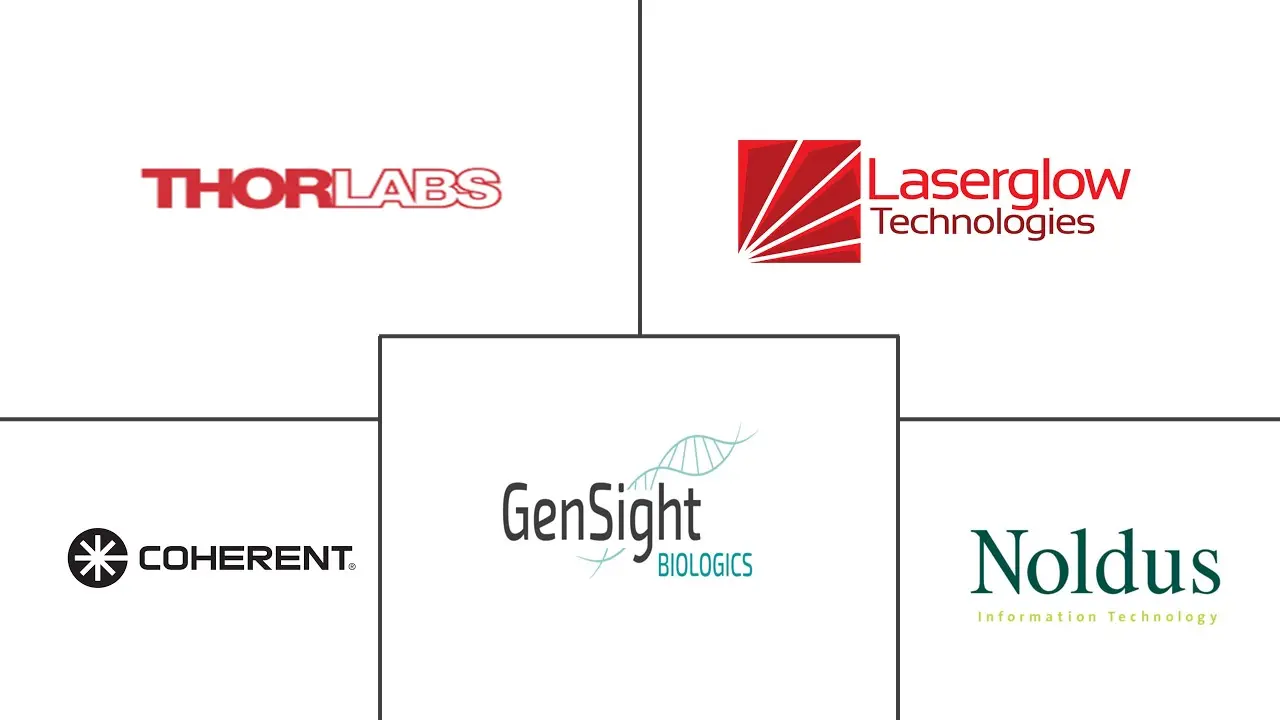Market Size of Optogenetics Industry

| Study Period | 2019 - 2029 |
| Market Size (2024) | USD 576.57 Million |
| Market Size (2029) | USD 711.32 Million |
| CAGR (2024 - 2029) | 4.29 % |
| Fastest Growing Market | Asia Pacific |
| Largest Market | North America |
Major Players
*Disclaimer: Major Players sorted in no particular order |
Need a report that reflects how COVID-19 has impacted this market and its growth?
Optogenetics Market Analysis
The Optogenetics Market size is estimated at USD 576.57 million in 2024, and is expected to reach USD 711.32 million by 2029, growing at a CAGR of 4.29% during the forecast period (2024-2029).
The COVID-19 pandemic is expected to impact the optogenetics market significantly. According to the article published by PUS University in February 2022 by Shanet Suzan Alex, SARS-CoV-2 causes neurological abnormalities and respiratory symptoms, with an 85% occurrence rate in Alzheimer's patients. As per the same source, SARS-CoV-2 infiltrated COVID-19 patients' cognitive centers, causing Alzheimer's-like phenotypes in those with no underlying conditions and exacerbating Alzheimer's neuropathology in those with Alzheimer's and autism. As a result, COVID-19 had many complications in patients with neurological disorders, and the market was significantly impacted. However, as the pandemic has currently subsided, neurology care has gone back to pre-pandemic levels, which are expected to increase the adoption of optogenetic products and lead to a normal market growth over the forecast period.
The major factors driving the market's growth include the scope of optogenetics as a potential diagnostic tool in neurosciences, the rapid growth of advanced technologies, and the increasing use of multimodal imaging. Optogenetics technology has revolutionized neuroscience in the last few years by allowing researchers to control specific neurons in experimental animals. The ability to control neurons has revealed information about brain pathways involved in diseases such as depression, obsessive-compulsive disorders, Parkinson's disease, and other conditions. In neural research, optogenetic methods for monitoring synaptic activity have proven to be extremely useful in several neurological diseases.
It allows researchers to study how the neurological activity patterns within specific brain cells give rise to thoughts, behaviors, and memories at unprecedented precision. Thus, it helps find cures and treatments for neurological and psychiatric disorders like depression, addiction, schizophrenia, and Parkinson's disease. For instance, according to the article published by Frontiers in April 2022, Parkinson's disease is said to be a chronic disease with no clinical cure. However, it can be alleviated and treated with optogenetics. Thus, the use of optogenetics in the treatment of Parkinson's proved a potent tool used to treat neurological diseases.
Also, rising cases of neurological disorders such as Parkinson's, Alzheimer's, epilepsy, and Huntington's disease may boost the market. According to an article published by scientific reports in October 2022, Parkinson's disease (PD) is often associated with dementia, and dementia causes a substantial negative impact on the affected individual, their care partners, and society. The affected individual loses their ability to function independently and faces a reduced survival and health-related quality of life. The article also reported that the cumulative prevalence of Parkinson's disease in the last 10 years in Sweden was 54%. Thus, the high burden of Parkinson's disease is expected to boost the usage of optogenetics.
The rising developments by major players are also expected to boost the market's growth. For instance, in September 2021, TSE Systems, one of the leaders in advanced preclinical research equipment for metabolic and behavioral research, and NeuroLux, the developer of battery-free wireless optogenetics implants for preclinical research, announced an exclusive partnership.
Hence, factors such as the increasing use of optogenetics for the treatment of neurological disorders, the rising prevalence of neurological diseases, and the increasing developments by key players are expected to boost the market's growth. However, a lack of awareness and the high costs of technology may restrain this growth over the forecast period.
